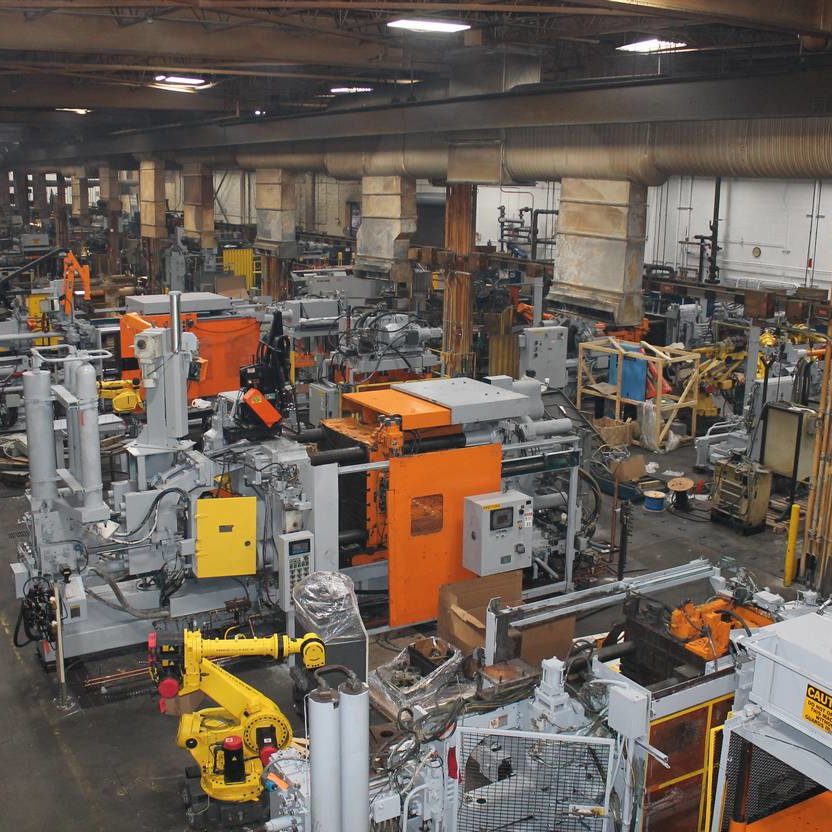The Facts About Aluminum Castings Company Revealed
Table of ContentsFascination About Aluminum Castings CompanyHow Aluminum Castings Company can Save You Time, Stress, and Money.Aluminum Castings Company - QuestionsAluminum Castings Company Fundamentals ExplainedIndicators on Aluminum Castings Company You Need To KnowAll about Aluminum Castings Company9 Easy Facts About Aluminum Castings Company ExplainedAluminum Castings Company Fundamentals Explained
There are two main kinds of die spreading made use of in the light weight aluminum casting sector: warm chamber pass away casting and cold chamber die spreading. The primary distinction in between these approaches is exactly how the molten metal is delivered to the mold. In warm chamber pass away spreading, commonly utilized for lower melting factor steels, the fusion is straight linked to the equipment, and a plunger requires the product through a gooseneck into the die dental caries.
The Main Principles Of Aluminum Castings Company
In these approaches, the mold is purposefully destroyed or escaped in order to draw out the finished aluminum casting. Typical processes under the classification of expendable mold and mildew spreading include (financial investment spreading),,, and investment spreading. When manufacturing customized aluminum parts using expendable mold and mildews, makers put liquified aluminum or light weight aluminum alloys into the mold and mildew, which is then broken apart to launch the strengthened metal component.
The is one of the earliest and most favored forms of light weight aluminum casting. It entails condensing specialized factory sand, frequently reinforced with clay or material, around a specifically crafted recyclable pattern that determines the shape and internal information of the finished light weight aluminum product. The pattern system includes risers and vents to manage the circulation of molten steel and to stop casting problems such as shrinkage porosity.
The Main Principles Of Aluminum Castings Company

This mold and mildew is after that preheated before the pouring of molten aluminum or aluminum alloy. As the metal loads the shell, it captures the elaborate information and fine surface finish of the mold and mildew. As soon as cooled, the ceramic is mechanically or chemically escaped, enabling for the removal and separation of private cast parts.
The Buzz on Aluminum Castings Company
Permanent mold and mildew spreading uses reusable metal molds and is perfect for mass production with regular top quality and much less waste. Expendable mold and mildew spreading uses single-use mold and mildews, like sand or foam, providing style flexibility and reduced tooling expenses for prototypes or brief runs. Die casting is best for creating high quantities of light weight aluminum parts that need tight resistances, great information, and smooth surface areas.
The Toshiba Machine DC-J Collection consists of die casting devices ideal for aluminum. Known for their robust building and high injection performance, these machines guarantee reliable and exact spreading (Sand Foundry).

While light weight aluminum can be utilized in its pure form, it is typically alloyed with various other metals to boost its buildings or the residential or commercial properties of the other metals. Light weight aluminum alloys are categorized into eight series, numbered from one to 8.
The Basic Principles Of Aluminum Castings Company
This alloying boosts the toughness and hardness of aluminum yet lowers its ductility and rust resistance. The 2000 series alloys are testing to weld yet can be warmth treated to enhance their residential properties. The 3000 series alloys are primarily alloyed with manganese. This mix boosts rust resistance while providing modest strength.
The 4000 series alloys are alloyed with silicon, which reduces the melting factor and enhances fluidness. This makes it a popular selection for casting, as it is very easy to create browse this site in its molten state.
Aluminum Castings Company for Dummies
This collection is categorized as a high-strength alloy, particularly suited for sheet and plate applications as a result of its superb weldability. Its resistance to corrosion from acids and antacid makes it excellent for use in extreme and aggressive environments (Aluminum Melting and Casting). The 6000 series alloys are alloyed with both magnesium and silicon, supplying a balance of stamina, mechanical residential properties, and corrosion resistance
Processing the 6000 series requires specialized and advanced equipment, which can be complex and pricey. This collection is recognized for its excellent corrosion and oxidation resistance, as well as its ease of finishing, treatment, and workability. The 7000 collection light weight aluminum alloys are the best and most durable amongst light weight aluminum types, with stamina similar to about two-thirds of industrial-grade A3 steel.
Rumored Buzz on Aluminum Castings Company
Zinc is the key alloying element in the 7000 collection, improving the hardness of the light weight aluminum, although zinc's hardness is similar to that of aluminum on the Mohs scale. The 8000 series light weight aluminum alloys are mostly alloyed with tin, along with percentages of copper and nickel (Sand Molding). While these alloys offer reduced stamina contrasted to various other collection, they stand out in machinability and use resistance
Aluminum cast heatsinks are electrically conductive, enabling them to be based successfully. They are usually cast with integrated attributes that lessen the need for secondary procedures, such as added machining or assembly, bring about additional price financial savings. Light weight aluminum spreading is often utilized to manufacture braces for both sturdy industrial equipment and family devices.
Getting My Aluminum Castings Company To Work
The single-piece building of aluminum braces enhances their toughness and resilience, minimizing the probability of failure. If openings are needed, they can be included straight in the casting mold, lessening the demand for post-production finishing (https://www.cybo.com/US-biz/aluminum-castings-corporation_2k#google_vignette). Makers have progressively embraced light weight aluminum spreading for golf equipment because of its durability, security, and versatility in shaping